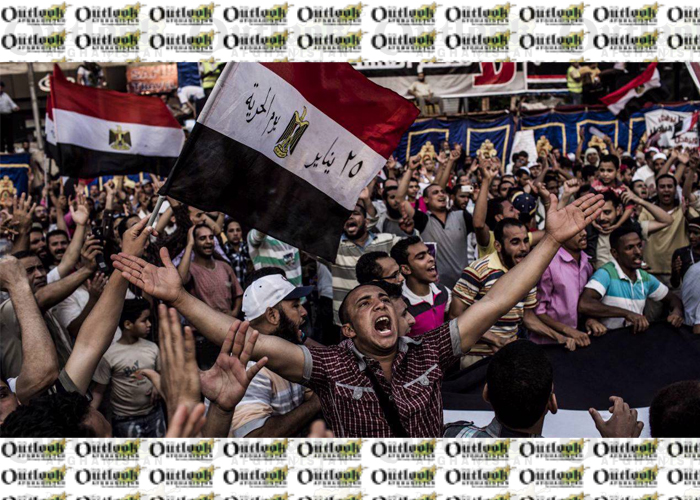The Arab Spring that began on December 17, 2010, is a somewhat uncomfortable subject a decade later. Seldom has such a vast outpouring of hope resulted in so much disappointment – and in such deep confusion about what lies ahead.
In 2002, the UN-sponsored Arab Human Development Report issued its stark initial findings, revealing a region that was falling behind the rest of the world, and where the aspirations of the young and the educated could no longer be met. Reform was obviously needed, but it would not be forthcoming. Eight years later, the conditions were ripe for revolution. When it came, it started in Tunisia, where a street vendor, fed up with the petty abuses of a corrupt system, immolated himself.
The focus soon shifted to the center of the Arab world, Egypt. When that country’s aging dictator, Hosni Mubarak, threw in the towel as hundreds of thousands demonstrated in Cairo’s Tahrir Square, the prospect of a democratic revolution in the Arab world suddenly came into view. Egypt seemed ready for a genuine democratic transition, with traditions of political pluralism to fall back on and a middle class that longed for a more open society and a more stable, representative political system.
There was genuine hope, which is why the European Union invested heavily in Egypt’s democratic transition, launching ambitious programs to help with the details of building a new political system. Early on, it was evident that the Muslim Brotherhood was the best-organized political and social movement in the country. For years, it had been mobilizing small-scale entrepreneurs and providing social services to communities, thus building a latent political base that no other movement could replicate. When Egypt held its first competitive election, Mohamed Morsi of the Muslim Brotherhood emerged victorious as president.
The basic question posed by the Arab Spring was whether Islam and democracy could be combined in a way that was both effective and sustainable. In Egypt’s case, the Morsi administration stumbled and misused its powers early on. Though its inexperience was hardly surprising, it was glaringly obvious, opening the door for the Muslim Brotherhood’s opponents both inside and outside Egypt.
When the military coup came in July 2013, the Morsi government had lost most of its initial support. But that does not mean that Egypt’s transition to democracy had to fail. The process was always bound to be bumpy, and one can imagine counterfactual scenarios in which it would have succeeded.
In any case, the repression that followed was brutal. The clearing of Rabaa Square by security forces left at least 817 people dead. By then, the Arab Spring had already begun to fizzle in other countries, too. The United States and key European countries led a military intervention to get rid of Muammar el-Qaddafi’s regime in Libya. But this resulted in even more instability in that country, which meant that no one was willing to intervene against Bashar al-Assad’s regime in Syria, despite the extreme brutality with which it was cracking down on opposition and rebel movements.
In the years since the Arab Spring, there has been a counter-revolution – an Arab Winter. And for the past four years, this democratic reversal has been actively supported by US President Donald Trump’s administration, which largely abandoned America’s tradition of advocating human rights and democracy. Where there have been exceptions, such as China and Iran, US criticism has mainly served other strategic interests. Everywhere else, dictators have been flattered, courted, and bestowed with large arms contracts.
Meanwhile, the EU has been effectively marginalized in the region. Few if any of the structural challenges that led to the Arab Spring revolts have been resolved. Early in the 2010s, the International Monetary Fund estimated that most countries in the Arab world would need to achieve annual growth of 7% just to keep the unemployment rate constant; but growth over the past decade has fallen well short of that target. And the human-rights situation is no better. “Under President Abdel Fattah al-Sisi’s government,” Human Rights Watch reports, “Egypt has been experiencing its worst human rights crisis in many decades.”
When it comes to the long term, the regimes in Saudi Arabia, Iran, and Egypt are hardly sustainable. One way or another, there will have to be fundamental reforms to bolster representative government and establish more open societies and economies. That is the abiding lesson of the Arab Spring in a region with a massive and growing youth population.
For the EU and US President-elect Joe Biden’s administration, the emphasis now should be on alleviating regional tensions in the Middle East and North Africa so that governments can focus on sorely needed domestic reforms. Without insisting that everything be changed overnight, America and Europe both need to apply consistent pressure on issues like human rights and representative government.
As was the case a decade ago, the key question is how to combine Islam and democracy in a way that facilitates the project of reform. The Arab Spring failed partly because of its own contradictions, and partly because powerful entrenched interests and outside forces wanted it to fail. But the counter-revolution, too, must end eventually.
Without repeating the excessive hopes of a decade ago, the basic demands that drove the Arab Spring must be taken seriously. Political leaders across the region should recognize that meeting them is the only way to ensure long-term stability.
Home » Opinion » Arab Hope Springs Eternal
Arab Hope Springs Eternal
| Carl Bildt

